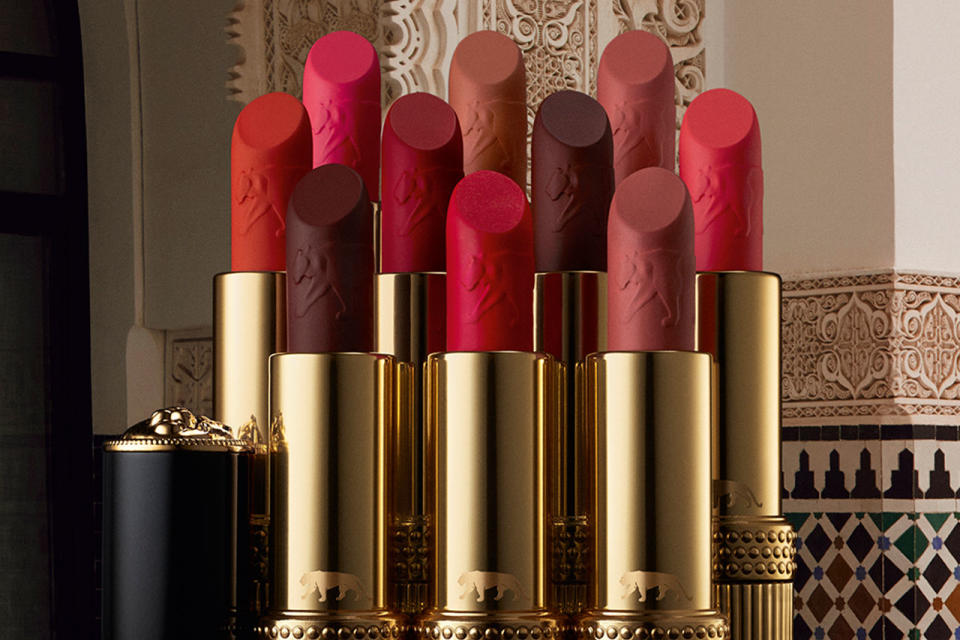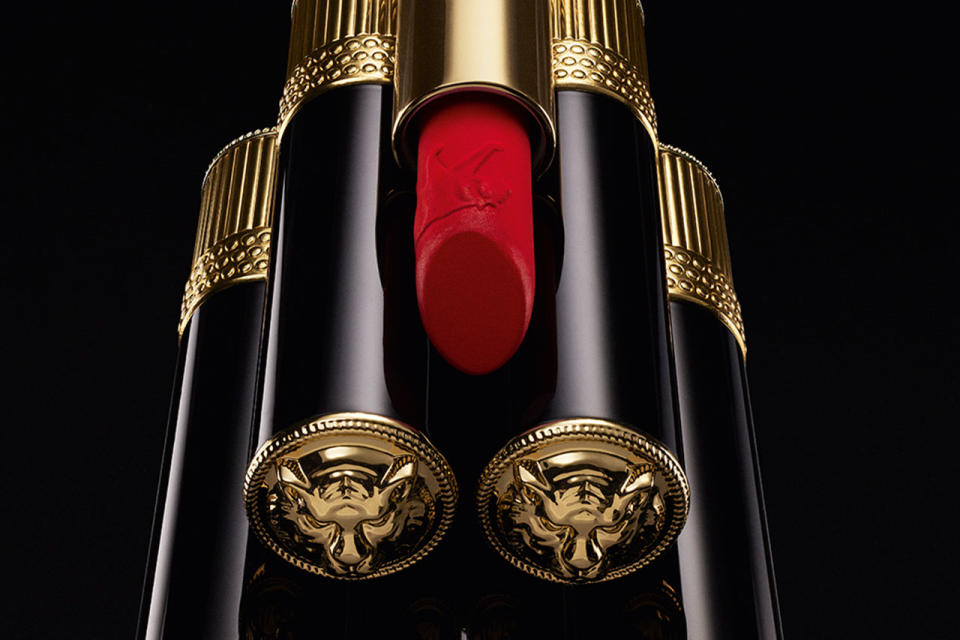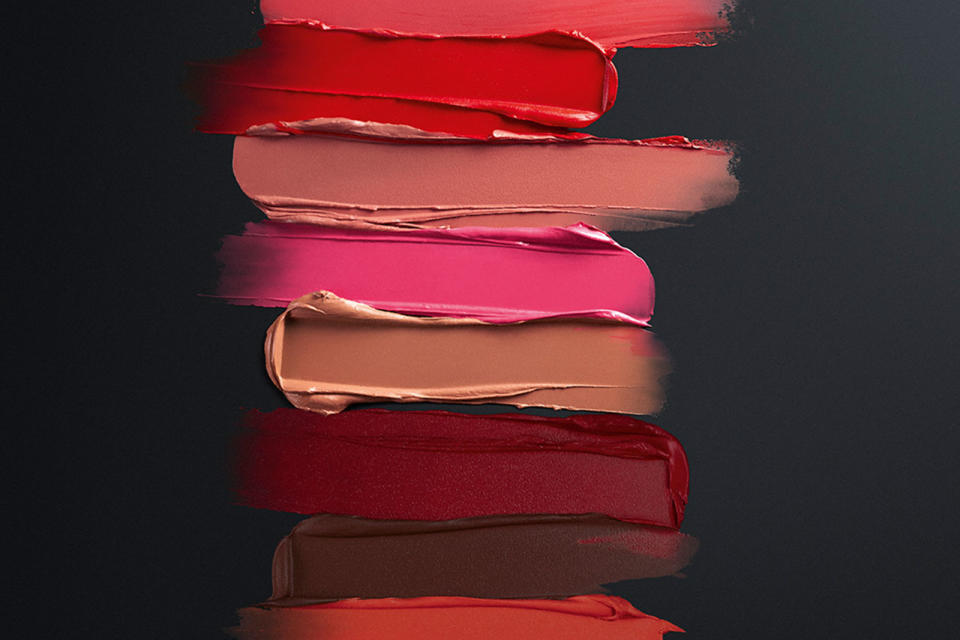Sabyasachi on Why India Is So Much More Than "Elephants, Peacocks and Bollywood"
Whatever your perception of India is, there's a high probability that it's not nearly representative enough. No matter how much you consider its artisan heritage, its penchant for color and vibrancy or its undeniable influence on the Western world -- there's still so much more that remains to be seen. With that in mind, a few major fashion brands have been born out of the continent, with those who are, paving the way for those who follow. One such brand is Sabyasachi, one of India's leading luxury fashion houses, centring around Indian heritage, quality and craftsmanship.
Since its inception 20 years ago, the brand has amassed a cult following of celebrities and fans through its luxury bridal collections and ready-to-wear, not forgetting collaborations with major global labels. Now, it's stepping into the world of beauty, bringing the cultural currency of India to the forefront of its offering. Resulting in a ten-piece collection with Estee Lauder, the collaboration features a multitude of satin matte and ultra matte lipsticks in hues inspired by the homeland.

"I wanted to get into beauty for a very long time. It's something that we had planned [for the brand] for 20 years and I wanted to partner with the best in the world," designer Sabyasachi Mukherjee tells Hypebae. Speaking about the essence of the collaboration, he adds, "I'm tired of having to explain to people that I come from a country, which is not a country [just] of elephants, peacocks and Bollywood actresses but a country where you also have intelligent people in medicine, in IT, in computer science and engineering, and that is actually a very modern country."
Drawing on the "intensity and warmth" of the continent, the collection aims to celebrate the color story of India, with shades including "Apricot Silk," "Udaipur Coral," "Coffee Masala" and "Calcutta Red." Housed in gilded cases crafted with 24-karat gold plating, each lipstick arrives emblazoned with the signature motif of Sabyasachi: the Bengal tiger.
We caught up with Sabyasachi to find out more about the process behind the collaboration, the relationship between fashion and beauty and why getting India the global recognition it deserves will always be at the top of his agenda.
Read on for the full interview.

You've just teamed up with Estee Lauder to launch a new collaboration, how did the partnership come about?
There's a saying by Rumi, the poet and philosopher: "What you seek is seeking you." I wanted to get into beauty for a very long time. It's something that we had planned [for the brand] for 20 years and I wanted to partner with the best in the world. Estee Lauder also wanted to figure out a strategic collaboration because they were growing in South Asia in a very big way and so strategically, it was best for both of us. I went to meet them about four years ago, and we started talking about the collaboration. They took me to the archives of Mrs. Lauder and when I started looking at things that she did, it made me realise that I felt a certain sense of kinship.
When entrepreneurs start their journey, there's no proof of concept. Nobody can really tell that if you want to be successful or not. What you have is just a little bit of faith and an idea and you grow it till it becomes something that people start believing in. Every entrepreneur has the same journey in that sense. I had the same when I was starting Sabyasachi 20 years ago, but what I really liked about her was the fact that she had a very serious singularity of vision and uncompromising attributes towards product and quality, and what she wanted to deliver. That really resonated with me and so I thought this was the perfect partnership.
Definitely, and so the collection itself features 10 shades of lipstick inspired by some of the colors associated with India. What can you tell us about the process behind choosing these shades? What were your considerations when making those decisions?
I was born middle class and for me, whenever I like to create a product, I like to create a product that has value and that can last. I'm called a fashion designer, but I like to believe that I make clothing and not fashion. The clothing is more timeless, whereas fashion is more transient. I wanted to create a line of colours, which was not necessarily seasonal or trend-driven, but more about classic, iconic colours, that women across the spectrum of skin colours would be able to use. The idea was to give them relatable, believable, classic colours -- some people would call it commercial, which I don't think is a bad word at all -- but the idea was really to create these shades where you would find your colour and probably want to keep it for the rest of your life.
When I look at beauty, I look at beauty as an outsider. Because of the fact that I'm a man, I can only really imagine a woman's choices, I can't make those choices for her because I'm not a woman myself. Instead, I think of products in terms of the things that can I give her, something that's going to stay with her and last. I want to create value by creating a sense of timelessness with the colours. Of course, the India story was important for me to tell as well because that's where I come from. Those are the colours that I see and I know. Everything is warm and toasty and spicy, but yet at the same time very classic. The only exception is the Bombay Berry, which has a little bit of an undertone of blue pigments.

Warm, toasty and spicy definitely feels like India! As you said, it's not the first time that you've entered the world of beauty, and it's always been something that's interested you. How would you, as a clothing designer, describe the relationship between fashion and beauty?
The main premise of clothing was always production. But both right now are used as an instrument of self expression and I think people's self expression is moving more and more towards the authentic self, where we are representing not just a history, but a geography as well. I think fashion and beauty will actually start becoming more and more hyper local.
Definitely. It makes sense that your surroundings would influence the way that you see both beauty and fashion. For you then, how does stepping into the world of beauty change your creative process? What are you doing differently?
Whether you're developing beauty or whether you're creating clothing, there are technical aspects of approaching those things that change. But aside from that, if you look at it completely from the end purpose, they are basically done to help us and to create an elevated sense of self. When we are creating fashion or beauty, if we remove the technicalities from it, it really is about thinking of the end use of the customer, what the customer wants to do with the product, and you work backwards from them.
In India, it's very tropical, it's also very humid. So I wanted to create lipsticks which were matte and ultra matte but we wanted to make sure that the lipsticks have hydration in them, because there's nothing worse than a matte lipstick that flakes on your skin and doesn't stay. We wanted it to be long lasting, because that's important when you spend your money buying something that's luxurious, you want it to last for a longer period of time. When we thought of hydration, we wanted to use an active ingredient from India so we used pomegranate and mango seed oil and mixed it with Moringa butter.
We actually created a special cinnamon scent, we had to decide between a floral note or a spicy note. I thought that if the world actually looks at India, the first thing that they think of is spices, and then flowers. As a result, we tried to create a product that was sensory, but at the same time it worked for the customer that we were talking to. Fashion is also like that. It's about who the consumer is, how they're travelling, whether they're using public transport or private. Whether you're doing beauty or fashion, it's about really knowing who the consumer is and what they really want.
View this post on Instagram
With that in mind, what can you tell us about the packaging? As a designer, did that part come more easily to you?
Well, I think beauty came easily, the packaging took time. I had two reasons to do this collaboration. Being a South Asian myself, I'm tired of having to explain to people that I come from a country, which is not a country [just] of elephants, peacocks and Bollywood actresses but a country where you also have intelligent people in medicine, in IT, in computer science and engineering, and that is actually a very modern country.
My pet peeve is the fact that because we have created and manufactured for the West, we have never really created a fashion or luxury label out of India. So, a lot of people think that luxury cannot be produced out of India or cannot be born out of India. I don't understand [that way of thinking] because some of the biggest fashion and luxury houses have grown big on the patronage of Indian maharajas, brands like Cartier and Bulgari.
For me, it was about two things: one, I wanted to create something that would stand shoulder to shoulder with some of the biggest in the world and two, I understand that we are a very expensive brand. When you're creating a craft based business where craft has to stand on its highest form, products do end up becoming very expensive. I constantly hear from a lot of my friends and family that "you don't think of the middle class or the upper middle class when you're creating a product. Not everyone can buy a product, only a few can." I have done collaborations like the H&M collection, I have created high street clothing for people, but I wanted to do a collection where I created a product of luxury, but at a price point that a lot of people can come by.
Definitely, it's clear that the talent and creativity and diversity is there, but it's about communicating it, right? What would you say is next for you then?
My plan is to spend the next 10 or 15 years trying to push the agenda of India globally and keep trying at my attempt in building a luxury brand out of India that people would respect for all the right reasons. I want to be able to also educate people about the fact that India is a multi-dimensional country. We have had a very myopic, and almost absurd, fantastical interpretation of India. It's a very Orientalist view of what it is, and through my business and my products, I want to be able to demystify that for a lot of people who are not Indians.

